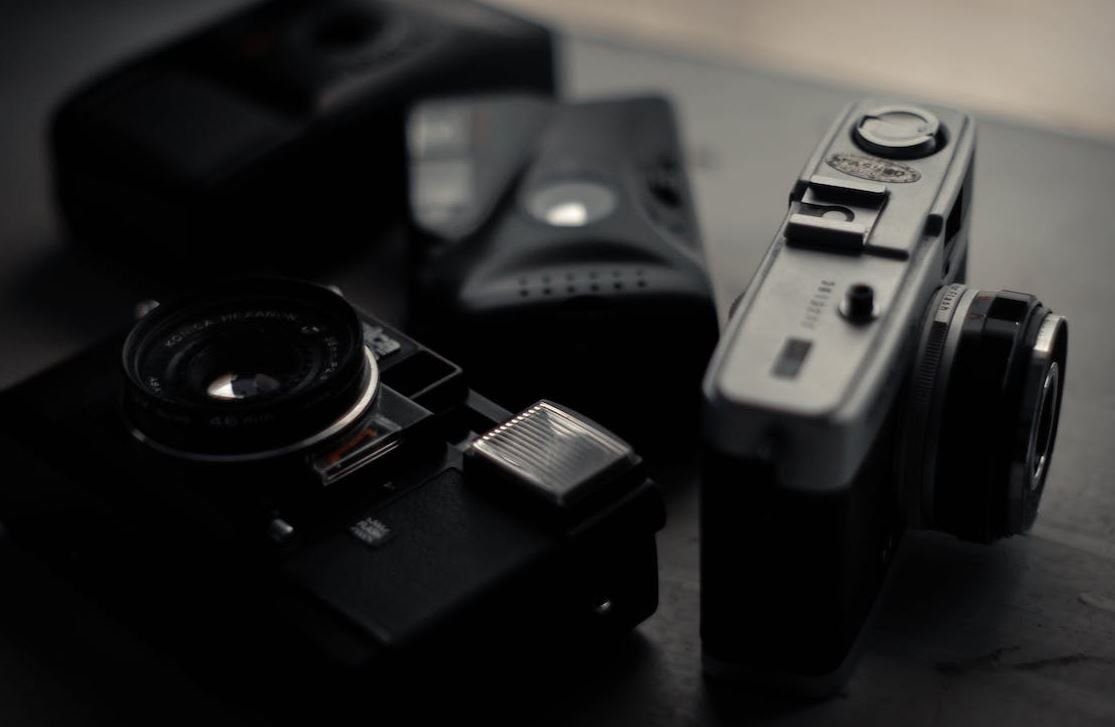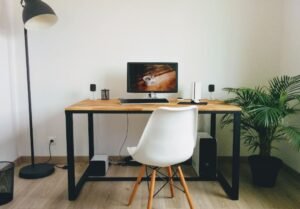Who Am I: Visual Journal
Have you ever wondered about the meaning of your life and who you truly are? Self-reflection is an important aspect of personal growth, and keeping a visual journal can be a powerful tool in this journey of self-discovery. Through a combination of words, images, and other artistic means, a visual journal allows you to express your thoughts, feelings, and experiences in a creative and introspective manner. In this article, we will explore the benefits of visual journaling and provide you with some tips to get started.
Key Takeaways
- Visual journaling is a powerful tool for self-reflection and personal growth.
- A visual journal combines words, images, and other artistic means for self-expression.
- It helps you explore your thoughts, emotions, and experiences in a creative and introspective manner.
- Visual journaling can be a therapeutic outlet for stress relief and emotional processing.
The Benefits of Visual Journaling
Visual journaling offers numerous benefits for self-exploration and personal development. By engaging in this creative practice, you can:
- Gain a deeper understanding of yourself and your life experiences.
- Discover patterns and themes in your thoughts, emotions, and behaviors.
- Unlock your creativity and develop your artistic skills.
- Release stress, process emotions, and manage anxiety.
- Enhance problem-solving skills and generate new ideas.
- Improve self-confidence and self-acceptance.
- Cultivate a greater sense of gratitude and mindfulness.
With these benefits in mind, it is evident that visual journaling can have a profound impact on your overall well-being and personal growth. So why not give it a try?
How to Start a Visual Journal
Now that you’re aware of the various advantages of visual journaling, let’s explore how to get started:
- Gather your supplies: Begin by collecting the materials you’ll need, such as a notebook or sketchbook, pens, pencils, markers, and any other art supplies you prefer.
- Select a format: Decide on the format of your visual journal. Will it be a traditional paper journal, a digital journal, or a combination of both?
- Set aside time: Carve out dedicated time in your schedule for regular journaling sessions. This will help you establish a consistent practice.
- Start creating: Begin by expressing yourself in whatever way feels most natural to you. Use words, drawings, collages, or any other medium that resonates with you.
- Reflect and explore: Take time to reflect upon your journal entries and explore the themes, patterns, and emotions that emerge. This introspection is crucial for personal growth.
- Experiment and play: Don’t be afraid to experiment with different techniques and styles in your visual journal. Allow yourself to play and have fun with the process.
- Be kind to yourself: Remember that there are no rules or judgments in your visual journal. It is a safe space for self-expression without the fear of criticism.
Starting a visual journal can be an exciting and transformative experience. *Each page is an opportunity for self-discovery and creative expression, helping you better understand yourself in the process.
Interesting Data on Visual Journaling
| Statistic | Data |
|---|---|
| Percentage of adults who believe visual journaling improves their mental health | 84% |
| Number of words typically written per page in a visual journal | Approximately 250 words |
| Most common themes in visual journaling | Emotions, relationships, dreams, and personal growth |
Tips for Maintaining a Consistent Practice
Establishing a regular visual journaling practice is key to fully reap its benefits. Here are some tips to help you maintain consistency:
- Start small: Begin with short journaling sessions and gradually increase the duration as you become more comfortable.
- Find inspiration: Seek out inspiration from other visual journalers, art books, magazines, or even nature.
- Join a community: Joining a visual journaling community can provide support, accountability, and fresh ideas.
- Set goals: Set specific goals for your journaling practice, such as completing one entry per week or exploring a particular theme.
- Embrace imperfection: Remember that your visual journal is a personal space for growth, not a gallery for perfect art.
Interesting Techniques to Try
Expand your visual journaling repertoire with these interesting techniques:
- Collage: Cut out and paste images, words, and textures that resonate with your current thoughts and emotions.
- Artistic lettering: Use different fonts and styles to emphasize certain words and convey their meaning visually.
- Color symbolism: Experiment with different colors and their symbolism to enhance the emotional impact of your entries.
- Mapping: Create mind maps or diagrams to explore complex thoughts and connections between ideas.
Your Journey of Self-Exploration
Embarking on a visual journaling journey can lead to incredible self-discovery and personal growth. It is a visual testament to your journey, capturing your thoughts, emotions, and experiences along the way. *With every stroke of your pen or brush, you inch closer to understanding your true self, unlocking your creativity, and finding solace in the process.

Who Am I: Visual Journal
Common Misconceptions
One common misconception people have about a visual journal is that it is exclusively for professional artists or those with exceptional artistic skills. However, this couldn’t be further from the truth. Any individual, regardless of their artistic abilities, can create and benefit from a visual journal. It is a personal space to express oneself through images, sketches, collages, and even simple doodles. It serves as a creative outlet and a means of self-reflection and exploration.
- Visual journaling does not require advanced artistic skills.
- It is a personal tool for creative self-expression.
- Anyone can benefit from keeping a visual journal, regardless of their level of artistic ability.
Another misconception is that a visual journal is only about drawing or painting. While these artistic elements can be a part of it, a visual journal can encompass a wide range of mediums and techniques. It can include photography, collages, mixed media, and even writing. The purpose is to capture and document one’s thoughts, emotions, and experiences visually. With the use of different materials, textures, and colors, a visual journal becomes a multi-dimensional representation of one’s inner world.
- A visual journal can incorporate various artistic mediums.
- It can include photography, collages, and mixed media.
- Expressing oneself through writing is also a valid approach to visual journaling.
Some people might think that a visual journal is primarily about creating beautifully polished artwork. However, in reality, it is more about the process and not necessarily the end product. The focus is on personal growth, self-discovery, and introspection. Imperfections and raw expressions are celebrated rather than discouraged. By letting go of the pressure to create something perfect, individuals find liberation and find their unique creative voice.
- The focus of a visual journal lies in personal growth and self-discovery.
- Embracing imperfections is encouraged.
- The process is more important than the final outcome.
One misconception regarding visual journaling is that it must be done every day or on a strict schedule. While consistency can be helpful, there are no rules or obligations regarding how often one should work in their visual journal. It is a personal practice that can be done whenever one feels the need to express themselves visually. Some individuals may find solace in journaling daily, while others may prefer to do it sporadically when they have a burst of creative energy or during significant life events.
- There is no strict schedule or requirement for visual journaling.
- It can be done whenever one feels motivated or compelled to express themselves visually.
- Some individuals may journal daily, while others may prefer sporadic sessions.
Lastly, people often mistakenly believe that a visual journal is something that should be shared with others or showcased publicly. While sharing your journal can be an option, it is not a requirement. A visual journal serves as a personal sanctuary where one can feel safe expressing their authentic self without judgment or comparison. Keeping it private allows for a deeper level of self-reflection and the freedom to explore and experiment without external influences.
- A visual journal does not need to be shared or showcased publicly.
- Privacy is essential for self-reflection and experimentation.
- Keeping a visual journal allows for an authentic expression without judgment or comparison.

The Evolution of Music Genres
Throughout history, music has evolved and diversified into various genres, each with its own unique characteristics and impact. The table below showcases the evolution of selected music genres over time, highlighting their origins and notable artists.
| Genre | Origination | Notable Artists |
|---|---|---|
| Jazz | New Orleans, early 20th century | Louis Armstrong, Miles Davis |
| Rock ‘n’ Roll | 1950s United States | Elvis Presley, The Beatles |
| Hip Hop | 1970s Bronx, New York | Run-D.M.C., Tupac Shakur |
| Pop | 1960s United States | Madonna, Michael Jackson |
| R&B | 1940s United States | Aretha Franklin, Stevie Wonder |
| Country | 1920s United States | Johnny Cash, Dolly Parton |
| Reggae | 1960s Jamaica | Bob Marley, Peter Tosh |
| Classical | 9th century Europe | Wolfgang Amadeus Mozart, Ludwig van Beethoven |
| Electronic | 1960s worldwide | Kraftwerk, Daft Punk |
| Heavy Metal | late 1960s United Kingdom | Black Sabbath, Iron Maiden |
The Impact of Social Media
In today’s digital age, social media platforms have revolutionized the way people communicate, share information, and connect with others. The following table explores the impact of social media on various aspects of society, from personal relationships to business and activism.
| Aspect | Positive Impact | Negative Impact |
|---|---|---|
| Personal Relationships | Facilitates long-distance communication | Can lead to isolation and addiction |
| Education | Access to online learning resources | Increases distraction and plagiarism |
| Business | Enables global marketing and customer engagement | Privacy and data security concerns |
| News and Information | Instant updates and diverse perspectives | Spread of misinformation and fake news |
| Activism | Facilitates organizing and raising awareness | Online harassment and cyberbullying |
The World’s Fastest Animals
Speed is a remarkable attribute in the animal kingdom. The table below lists some of the world’s fastest animals and their impressive top speed capabilities.
| Animal | Top Speed (mph/kph) |
|---|---|
| Cheetah | 75/120 |
| Peregrine Falcon | 240/386 |
| Sailfish | 68/110 |
| Pronghorn Antelope | 55/89 |
| Hyena | 37/60 |
Most Populated Cities in the World
As urbanization continues to accelerate, cities become home to vast populations. The following table presents the top five most populated cities worldwide, showcasing their estimated population figures.
| City | Country | Estimated Population |
|---|---|---|
| Tokyo | Japan | 37 million |
| Delhi | India | 31 million |
| Shanghai | China | 27 million |
| Mumbai | India | 22 million |
| São Paulo | Brazil | 21 million |
The Impact of Climate Change on the Environment
Climate change poses significant threats to our environment, resulting in various consequences. The table below highlights some of the major impacts of climate change, ranging from rising sea levels to species extinction.
| Impact | Description |
|---|---|
| Rising Sea Levels | Threatens coastal communities and ecosystems |
| Increased Temperatures | Alters ecosystems, affects biodiversity |
| Extreme Weather Events | More frequent and severe hurricanes, droughts, etc. |
| Loss of Biodiversity | Endangers plant and animal species and ecosystems |
| Disruption of Agriculture | Affects crop yield, food security, and livelihoods |
Famous Monuments Around the World
Architectural wonders and cultural icons, the world’s famous monuments attract millions of visitors each year. The following table showcases some of these renowned landmarks and their locations.
| Monument | Location |
|---|---|
| Taj Mahal | Agra, India |
| Petra | Jordan |
| Great Wall of China | China |
| Statue of Liberty | New York, United States |
| Eiffel Tower | Paris, France |
World’s Largest Oceans and Seas
The Earth’s vast water bodies cover a significant portion of its surface. The table below presents the world’s largest oceans and seas, along with their approximate surface area.
| Ocean/Sea | Approximate Surface Area (square miles/square kilometers) |
|---|---|
| Pacific Ocean | 63,800,000/165,250,000 |
| Atlantic Ocean | 41,100,000/106,460,000 |
| Indian Ocean | 27,240,000/70,560,000 |
| Southern Ocean | 7,848,300/20,327,000 |
| Arctic Ocean | 5,427,000/14,056,000 |
Number of Smartphone Users Worldwide
Smartphones have become an integral part of modern life, connecting people around the globe. The table below showcases the estimated number of smartphone users worldwide, demonstrating their widespread adoption.
| Year | Number of Smartphone Users (in billions) |
|---|---|
| 2016 | 2.5 |
| 2017 | 2.7 |
| 2018 | 2.8 |
| 2019 | 3.2 |
| 2020 | 3.5 |
Academy Award Best Picture Winners
The Academy Awards, also known as the Oscars, honor outstanding achievements in the film industry. The following table presents some notable past winners of the coveted Best Picture award.
| Year | Film | Director |
|---|---|---|
| 1997 | Titanic | James Cameron |
| 2001 | A Beautiful Mind | Ron Howard |
| 2007 | No Country for Old Men | Joel and Ethan Coen |
| 2014 | Birdman | Alejandro G. Iñárritu |
| 2019 | Parasite | Bong Joon-ho |
In conclusion, the world is rich with diverse and fascinating data across various subjects. From music genres and social media impacts to wildlife and cultural landmarks, these tables shed light on compelling information that contributes to our understanding of the world around us. Exploring such data helps us appreciate the achievements, influences, and challenges found in the realms of music, technology, nature, and more.
Frequently Asked Questions
FAQs about Visual Journals
Q: What is a visual journal?
A: A visual journal is a diary or record of thoughts, ideas, events, or experiences, where individuals can creatively express themselves using various visual elements such as drawings, paintings, collages, photographs, and more.
Q: Why should I keep a visual journal?
A: A visual journal allows for self-reflection, exploration, and documentation of personal growth. It can serve as a therapeutic tool, a creative outlet, a way to improve artistic skills, or simply a way to preserve memories in a visual and meaningful way.
Q: How do I start a visual journal?
A: To start a visual journal, you can gather supplies such as a notebook or sketchbook, pens, pencils, markers, colored pencils, and any other art materials you prefer. Begin by setting aside time for journaling and experimenting with different techniques or themes. There are no rules, so let your imagination and creativity guide you!
Q: What can I include in a visual journal?
A: You can include anything that inspires you or holds personal meaning. This may include drawings, sketches, paintings, collages, magazine clippings, photographs, written reflections, quotes, poems, and more. Experiment with different mediums and styles to make your visual journal unique to you.
Q: Are there any guidelines for visual journaling?
A: There are no strict guidelines for visual journaling. It is a personal and subjective practice. However, you can establish your own guidelines or themes, such as journaling daily, exploring a specific topic or emotion, or experimenting with a particular art technique. The key is to make it a regular practice and enjoy the process.
Q: How can a visual journal benefit my mental well-being?
A: Visual journaling can benefit mental well-being by providing a healthy outlet for emotions, self-expression, and self-reflection. It can help reduce stress, improve mood, promote mindfulness, and increase self-awareness. Engaging in a creative activity like visual journaling can be therapeutic and promote overall mental well-being.
Q: Can a visual journal improve my artistic skills?
A: Yes, keeping a visual journal can improve your artistic skills over time. Through regular practice, experimentation, and exploration of different art techniques, you can develop your drawing, painting, and collage skills. The visual journal serves as a space to hone your artistic abilities and discover new techniques.
Q: Can I share my visual journal with others?
A: Sharing your visual journal is entirely up to you. Some individuals prefer to keep their visual journal private and use it as a personal tool for self-expression. Others may choose to share selected pages or the entire journal with trusted friends, family, or a wider audience through social media or exhibitions. It’s your choice how much or little you want to share.
Q: How can I overcome creative blocks in visual journaling?
A: Creative blocks are a common experience for artists. To overcome creative blocks in visual journaling, you can try changing your environment, taking breaks, seeking inspiration from other artists or sources, experimenting with new materials or techniques, and journaling about the block itself. Embrace the process and remember that creative blocks are temporary.
Q: Where can I find inspiration for my visual journal?
A: Inspiration for your visual journal can come from anywhere and anything. Look around you in nature, books, movies, music, photographs, magazines, or even your own emotions and experiences. Keep a sketchbook or digital folder to collect ideas, images, quotes, or colors that inspire you. The more you observe and explore, the more inspiration you will find.




